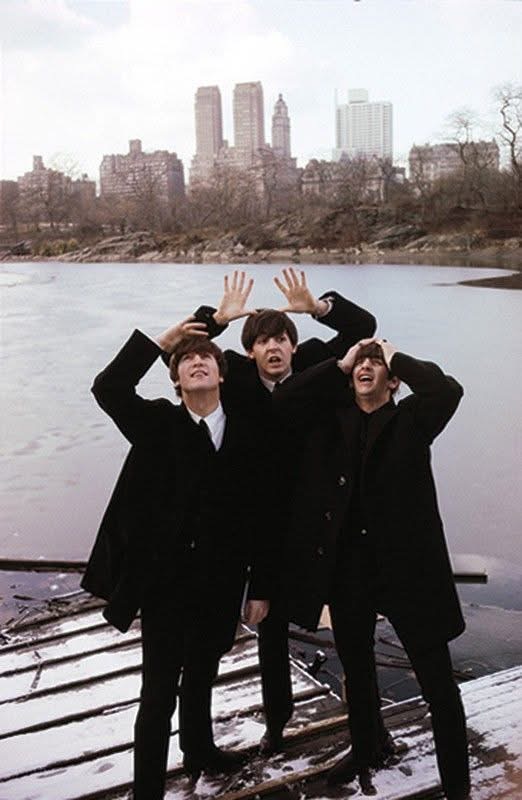Here’s a **600-word article** expanding on your text, painting a fuller picture of The Beatles’ revolutionary era in the mid-1960s with *Revolver* and *Sgt. Pepper’s*:
—
**When The Beatles Redefined Everything: From Revolver to Sgt. Pepper’s, and the Birth of Psychedelia**
By 1966, The Beatles weren’t just riding the wave — they were the wave. Having conquered charts, stages, and hearts worldwide, the four young men from Liverpool began to look inward, outward, and beyond the boundaries of rock and roll. What followed was not just a musical evolution but a cultural revolution, crystallized in two albums that would redefine what music could be: *Revolver* (1966) and *Sgt. Pepper’s Lonely Hearts Club Band* (1967).
It was on *Revolver* that The Beatles began to fully embrace experimentation. “Tomorrow Never Knows,” inspired by Timothy Leary’s psychedelic writings and John Lennon’s fascination with the Tibetan Book of the Dead, was unlike anything listeners had heard. Built on a hypnotic drum loop from Ringo Starr and drenched in tape loops, backward guitar, and Indian tambura drone, the song was both a spiritual journey and a technical marvel. Lennon’s vocals, filtered through a rotating Leslie speaker, sounded ethereal and unsettling — as if his voice had left his body.
George Harrison, captivated by Indian classical music and philosophy, made his own leap with “Love You To,” which featured sitar, tabla, and a structure rooted in raga rather than Western chord progressions. This wasn’t just an exotic flourish; it was the first serious attempt by a Western rock band to integrate Eastern music on its own terms.
Paul McCartney, ever the melodic craftsman, contributed both psychedelic whimsy and classical sophistication. “Eleanor Rigby,” with its haunting string octet, painted a stark portrait of loneliness and mortality, while “Got to Get You into My Life” pulsed with the brassy energy of Motown. The contrast between Paul’s storytelling and John’s abstract lyrics gave *Revolver* a dynamic richness that pushed rock beyond its teenage origins.
**The Alchemy of Sgt. Pepper’s**
With *Revolver*’s success, The Beatles went further, turning the studio itself into an instrument. *Sgt. Pepper’s Lonely Hearts Club Band*, released in June 1967, wasn’t just an album; it was a concept, a performance, and a piece of pop art. The idea of adopting alter egos freed them from the expectations of “being The Beatles.” As Paul envisioned, the fictional Sgt. Pepper’s band could be anyone, allowing them to explore new sounds and personas.
Tracks like “Lucy in the Sky with Diamonds” — despite the persistent LSD rumors — painted psychedelic dreamscapes, mixing surreal lyrics with Lennon’s nasal, floating vocals and the bright shimmer of a Lowrey organ that sounded like a harpsichord. George’s “Within You Without You” invited listeners on a spiritual quest, its droning sitar and tabla weaving Eastern philosophy into Western pop.
Behind the scenes, producer George Martin was as much an architect as the band itself. Using techniques like varispeed recording, tape splicing, and multi-tracking, he layered sound upon sound, blending orchestral arrangements with electric guitars and carnival organs. “A Day in the Life,” with its sweeping orchestral crescendos and contrasting sections by Lennon and McCartney, closed the album with a haunting piano chord that seemed to echo into infinity.
**A Revolution Beyond Music**
Yet the impact of *Revolver* and *Sgt. Pepper’s* wasn’t confined to sound. The Beatles helped reimagine what an album could mean — no longer just a collection of songs, but a unified artistic statement. Peter Blake’s iconic cover art for *Sgt. Pepper’s* turned the record sleeve into a canvas, mixing cultural icons, personal heroes, and psychedelic collage.
Live performances also shifted. Though The Beatles stopped touring in 1966, the studio work they created changed what bands aimed to reproduce on stage, inspiring the era of elaborate light shows and experimental concerts.
Ultimately, with *Revolver* and *Sgt. Pepper’s*, The Beatles turned rock into something limitless. They fused Indian music, classical strings, studio trickery, and surreal poetry, proving that popular music could be as visionary and boundary-breaking as any art form.
In just two years, The Beatles didn’t just explore psychedelia — they ignited it, leaving a legacy that would ripple through music, art, and culture for generations to come.
—
If you’d like, I could also create a follow-up on *Magical Mystery Tour* and the White Album!
